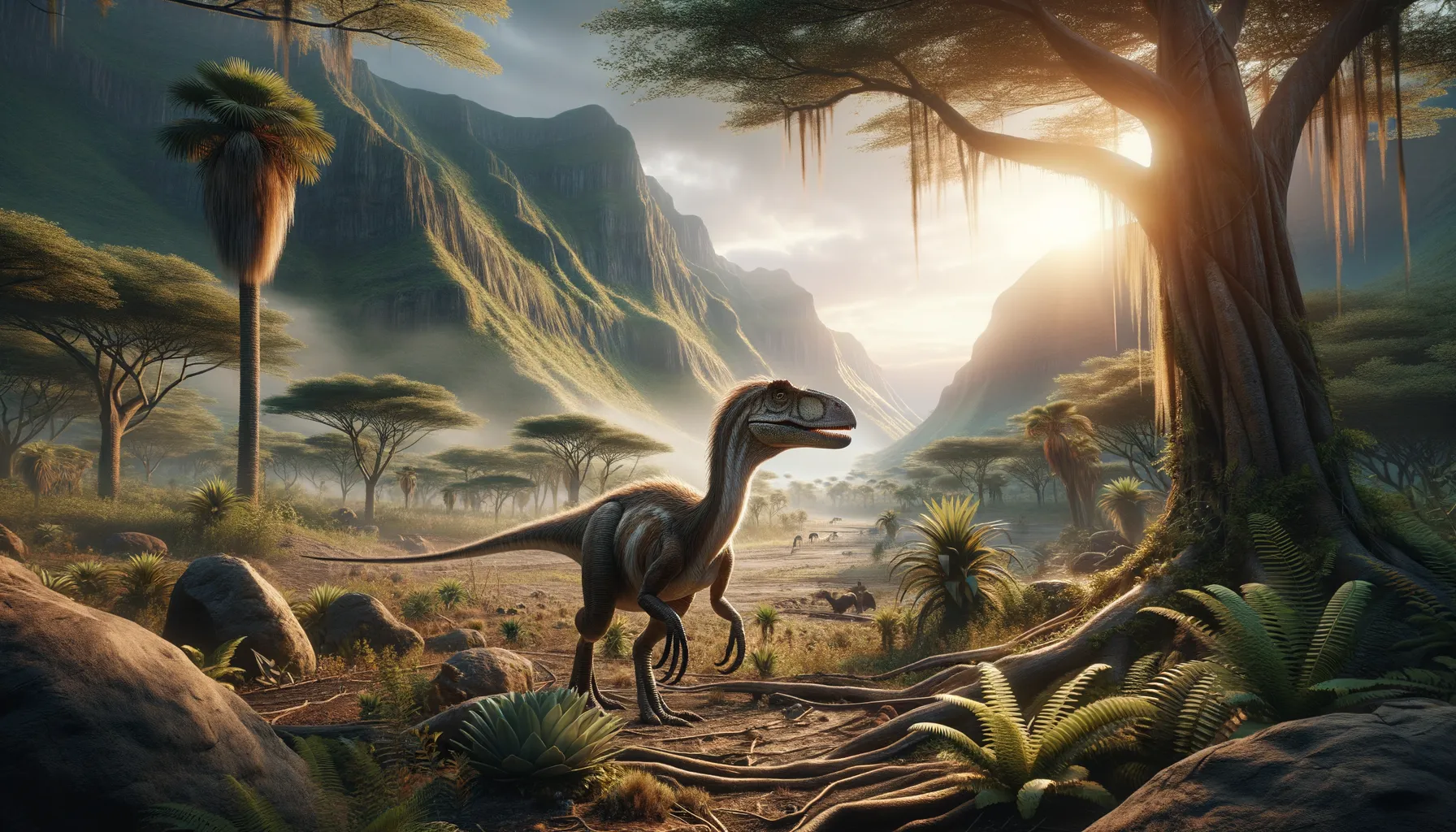
Nqwebasaurus
Quick-footed dinosaur of ancient Africa.
Period
Cretaceous
Length
Its length was approximately 1 to 1.2 meters.
Height
Its height was about 0.5 meters at the hips.
Weight
It weighed around 10 to 15 kilograms.
Nqwebasaurus was a small, bipedal dinosaur from the Early Cretaceous period. It is known for its bird-like features and was one of the earliest known ornithomimosaurs found in Africa. With long limbs and a beak-like snout, it likely fed on a varied diet, possibly including both plants and small animals. Despite its small size, its discovery has provided significant insights into the evolution of theropod dinosaurs on the African continent.
Diet
Nqwebasaurus had a varied diet, indicative of its flexible feeding habits. It likely consumed plants, insects, and small animals, making it an omnivore.
Hunting
Nqwebasaurus was not primarily a hunter of large prey. Its small size suggests it hunted for food that was easily accessible, such as small creatures and insects, using its beak-like snout.
Environmental challenges
During the Cretaceous period, Nqwebasaurus faced various environmental challenges, including fluctuating climates that influenced its habitat. Shifting ecosystems required it to adapt to different food sources and living conditions to survive. It coexisted with larger predators, which posed a significant threat to its survival and required it to be agile and alert. The dynamic landscape offered both opportunities and challenges in terms of shelter and resources.
Speed
Nqwebasaurus was likely a nimble runner.
Lifespan
It is estimated to have lived for decades.
First discovery
First discovered in South Africa in 1996.
Fun Facts
- Nqwebasaurus is often called the 'African raptor' because it lived in what is now South Africa during the Early Cretaceous period.
- It was a small dinosaur, roughly the size of a turkey, making it quite the speedy little creature.
- Nqwebasaurus is one of the earliest dinosaur fossils found in Africa, providing valuable insights into dinosaur evolution on the continent.
- Unlike many other theropods, this dinosaur had a mix of herbivorous and carnivorous diets, showcasing its unique adaptability.
- The name Nqwebasaurus comes from the Nqweba Dam in South Africa, highlighting the local heritage of its discovery.
- Nqwebasaurus had a long neck and a small head, which was packed with sharp teeth and a beak-like tip for feeding.
- Its discovery helped scientists understand the spread of dinosaurs across ancient southern continents, contributing to what we know about continental drift.
Growth and Development
Nqwebasaurus exhibited significant changes in body structure as it matured, adapting to its omnivorous diet. Its growth would have included honing its ability to forage efficiently. Fossil evidence suggests that this species developed strong hind limbs early on, reflecting its reliance on speed. The process of growth was likely coupled with learning to interact with its environment to optimize survival chances.
Habitat
Nqwebasaurus inhabited regions that were a mix of open plains and forested areas, providing diverse resources. These habitats supported a variety of flora and small fauna, ideal for an omnivorous diet. The climate during its time was generally warm, influencing the types of vegetation that Nqwebasaurus could have depended on. Seasonal variations would have affected food availability, influencing its movement patterns.
Interaction with other species
Nqwebasaurus coexisted with various other Cretaceous creatures, from large predators to smaller herbivores. Its interactions likely ranged from prey to opportunistic competitor for resources, depending on the species. Being relatively small, it might have formed groups for better protection against predators. Its presence in the ecosystem contributed to its ecological dynamics, impacting food chains and plant life.
Natural lifespan
Life expectancy for Nqwebasaurus was likely several decades in the wild.
Reproduction
Nqwebasaurus likely reproduced similarly to other theropods, laying clutches of eggs. Nesting sites would have been chosen for protection against predators and environmental hazards. Parental care, if present, might have included nest guarding and possibly protection of young until they reached a more independent stage. Growth rates from juvenile to adult stages were likely crucial for survival in its dynamic environment.
Social behaviour
While direct evidence is scarce, Nqwebasaurus might have displayed some social behavior, perhaps forming groups to enhance survival odds. Such behaviors would be beneficial for foraging, protection, and sharing knowledge of resource locations. Group living could also offer advantages in avoiding predation and caring for young. Social structures might have been fluid, adapting to environmental conditions.
Fossil locations
Fossil remains of Nqwebasaurus have been found in the Kirkwood Formation of South Africa. These findings provide valuable insights into the diversity of theropod dinosaurs in Africa during the Early Cretaceous. The site offers evidence of the type of environment this species inhabited. Discoveries in this region contribute significantly to paleontological studies of South African dinosaurs.
